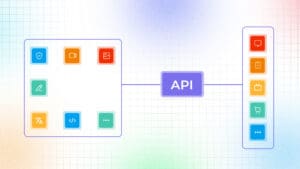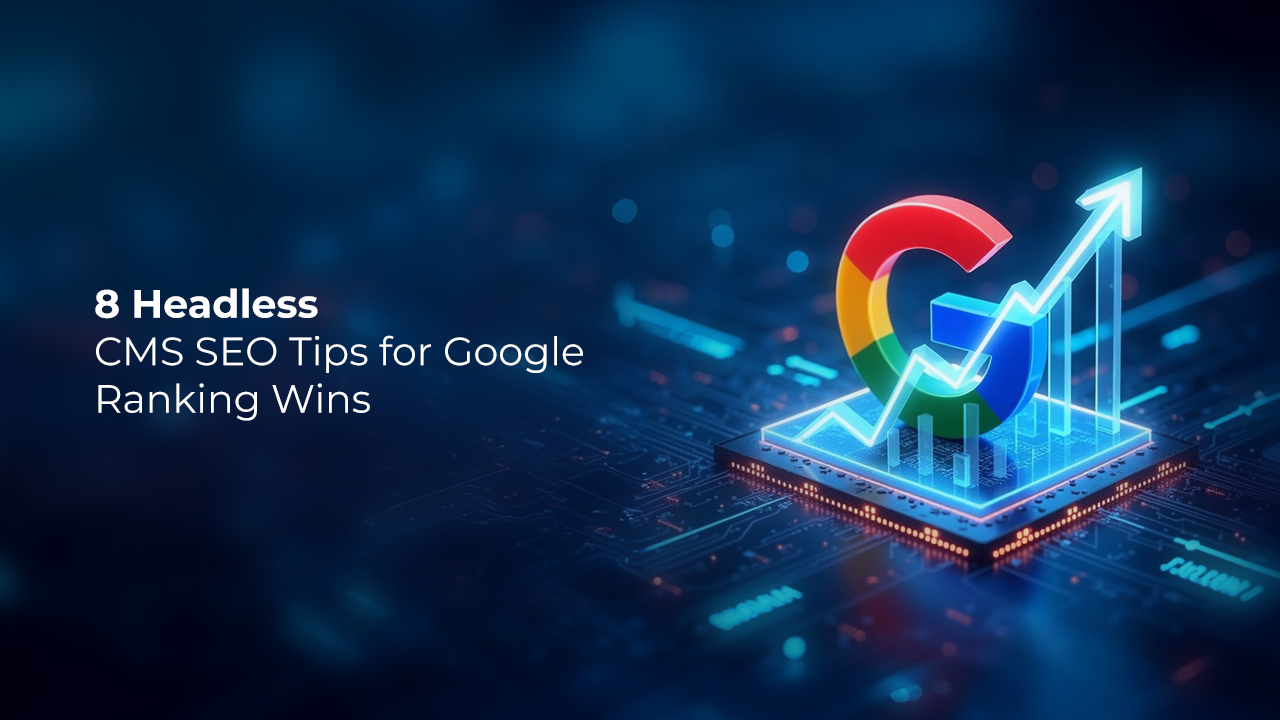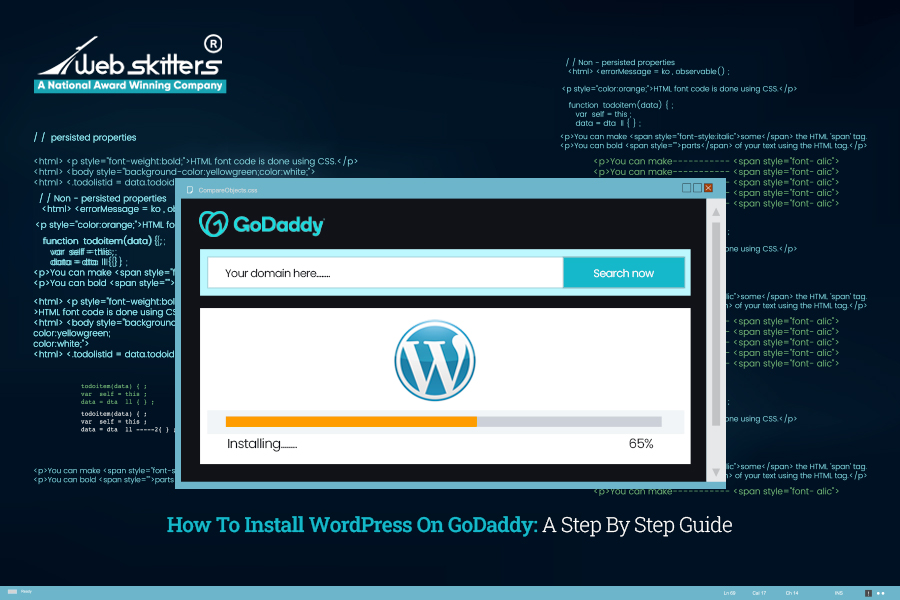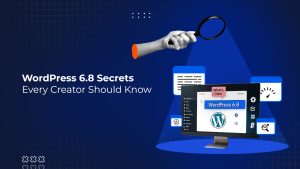Today, users worldwide don’t want to stick to one platform when accessing content. They tend to hop from one platform to the other, depending on their mood and needs. This platform diversification has led to the need for consistent content delivery across all channels. This is where headless CMS SEO comes into the picture.
But how does a headless CMS achieve that? It does that by separating the head (front end) from the body (back end). Everything we see on the internet, like a website or a mobile application, entails two parts: the front end, which presents the content, and the back end, which manages it. So, separating the front end and the back end ensures content consistency for omnichannel customers.
What does it do? It boosts your search rankings on SERPs like Google. As the content is accessible from a wide range of platforms, the search engine visibility of your content is substantially enhanced. This leads to increased conversions and better business outcomes. However, you need to optimize your headless content through structured SEO efforts.
Still confused? Worry no more. We have got you covered!
In this blog, we will talk about what headless CMS is and why it matters. Plus, we will also discuss the importance of SEO for headless CMS, and 8 headless CMS SEO best practices or tips. So, without further ado, let’s dive right in!
What is Headless CMS?
The term “headless” for a content management system is pretty awkward. However, it’s there for a reason.
A CMS (Content Management System) that decouples the content presentation (head or frontend) and the content repository (body or backend) is known as a headless CMS. Simply, it is a backend-oriented content management system.
How does it ensure content consistency? Since the backend and front are separated, the repository makes the content accessible to any frontend—be it a website, mobile app, wearable, or voice search device, through an API or application programming interface.

The crux of it is that it allows the content to be visible to a wide range of devices and platforms without any change. This accessibility boosts search engine rankings, improves engagement, and enhances visibility.
Why Headless CMS Matters?
You will be surprised to know that big companies like Samsung, Nike, National Geographic, and IKEA are adopting headless CMS, instead of it being a relatively new concept.
Before understanding why headless CMS matters, let’s look at a real-world example. The SEG (Samsung Electronics Germany) transitioned from a dedicated mobile-only member platform to an omni-channel solution that responds rapidly to boost user engagement by incorporating headless CMS.
What was the problem with the previous approach of the platform? The membership platform that originally catered to mobile audiences quickly found it critical to transition into a website version. As the content was initially structured for mobile devices only, the developers faced immense difficulty in functionality replication using the rigid template of AEM (Adobe Experience Manager).
How was it solved? The headless CMS allowed the developers to structure the content in a way that provided the same experience on both the mobile app and the web version.
The popularity of headless CMS has grown and is growing exponentially among businesses. Don’t believe us? Let’s look at Google Trends. If we look at the data over the last couple of years, we will see a large spike in headless CMS searches globally.

What is the reason behind this spike in interest?
This approach is becoming popular in handling content because of an increase in platform diversification and the improved developer experience it offers. Some other reasons stated by experts include:
- The feasibility of hyper-personalization
- The need for consistent content by omnichannel users
- Emerging content strategies catalyzed by Artificial Intelligence
- Website security and reliability
- Harmonization of data by a unified content structure
What’s the biggest advantage of a headless content management system? It offers freedom and control over content delivery. In fact, you’re not restricted to a particular template, theme, or tech stack, providing complete control over the content delivery process. It allows you to push content faster while iterating your online presence seamlessly.
What is Headless CMS SEO?
Now that we have a clear idea of what headless CMS is and why it is important, it’s time to look at its SEO aspect. Before understanding the challenges, let’s explore the concept of headless CMS SEO or headless SEO.
SEO’s reputation is bad for its complexity, which is complemented by Google’s regular algorithm updates. While a well-structured SEO effort by a reputed SEO agency is an exceptional business investment, it is one of the major foundations for scaling your business online.
What exactly is headless SEO? In simple terms, headless CMS SEO is the process of headless CMS optimization, enabling your business website to perform better organically.
In the headless arena, you create content units instead of pages. This content can be displayed consistently across different channels and devices. Some channels are basic like an app or a website. On the other hand, you can take this content beyond while integrating with digital signage; marketplaces like Amazon or Etsy, wearable and voice search devices, and even with social media.
So, headless CMS SEO is less focused on building quality links or creating content but on grasping the decoupled system’s nuances.
Why SEO Matters for Headless CMS?
Previously, the search rankings were dominated by keyword density and volume. This resulted in poor web page quality as they lacked any sort of personalization. Since then, the Google algorithm has evolved and prioritizes user intent and personalization more than ever.
Now, it considers factors like NLP (Natural Language Processing), content quality, performance, user experience, context, and other ranking metrics. This is done to produce more human-oriented content rather than robot-driven gibberish.
Traditional CMS platforms like WordPress make it easy for digital marketers to track their SEO efforts through add-ons and plugins. However, headless CMS presents a technical challenge because there are no guardrails for marketers with technical implementation.
However, as we dive deep into the era of IoT and AI entailing voice searches and omnichannel requirements, CMS platforms like WordPress are falling short.
The headless SEO is the need of the hour. This is because voice assistants like Alexa, Siri, and Google Home, wearables like Galaxy watch, Apple Watch, and SNAP specs, and VR devices such as Oculus require headless CMS. These devices and platforms have revolutionized our interaction with the digital world. So, legacy or traditional CMS can’t push consistent content into these devices from which we consume content.
You must be wondering how SEO affects these headless content management systems. While it’s true that it doesn’t always entail search engine results, the principles can be applied to the devices we usually interact with.
Let’s consider an example. Optimizing the headless CMS SEO for a web page selling dresses can have its content qualified for Voice search devices like Alexa. When asked where someone can find a red dress, the optimization can lead the user to your page.
This also applies to news agencies that deliver blurbs or headlines to wearables like Apple watches or Fitbits.
The rise of additional complexity has led to the demand for creating relevant and quality content. Hence, the importance of headless CMS SEO cannot be overlooked in the IoT and AI-driven era.
8 Essential Tips to Improve SEO with Headless CMS
By now, we understand the concept of headless CMS, headless CMS SEO, and why SEO matters for headless CMS. It’s time for us to explore the 8 essential headless SEO tips for headless CMS optimization. Some of these can be considered technical SEO for headless sites. Let’s explore these SEO best practices in detail.
1. The Power of Metadata Management
While the Meta tags are for the front end, these impact your SEO performance significantly. So, it is important to check them periodically. While there is a wide range of Meta tags, some of the basics to consider for a seamless headless CMS SEO implementation are:
- Title: Checking how it is generated across your site can help. For some pages, you will want a specific section in the CMS to generate them, while on other pages, like archives, categories, or archives, you can set rules for automatic generation.
- Meta Description: Just like titles, you’ll want to have a CMS field for some pages that allow you to edit Meta descriptions directly. For other pages, you will want to auto-generate them. Some headless CMSs let you integrate AI to help with this.
- Type of Content: This Meta tag lets the browser decide the content type on the page. This is useful for international contexts as it ensures umlauts and accent marks are displayed correctly.
Crafting metadata with long-tail keywords can enhance flexibility, which search engines and target audiences can leverage. This can improve CTR and reduce bounce rate.
2. URL Slugs
You should avoid numerical URLs at all costs. By this, you increase the URL’s value to the end users. The appropriate use of headless content can enable you to create something that’s brand-oriented and personalized, nurturing a resonating connection with the target audience. This can make your page stand out among other high-performing pages.
Let’s see an example. Instead of using URL slugs like this:
![]()
You have to create something like this:
![]()
(Source: https://www.webskitters.com/10-core-web-vitals-optimization-tactics-to-skyrocket-your-seo )
This gives a clearer picture of your content that is relevant not only to the search engines but also to your target audience.
1. Canonical URLs
The more intricate data you create or operate on, the more important it is for you to establish an appropriate value for basic elements on-site. This is especially significant for multi-layered international projects.
But, what exactly are canonical URLs? Simply put, a canonical URL is the preferred URL for a page when multiple URLs point to similar content. According to <href=”#:~:text=A%20canonical%20URL%20is%20the,Give%20feedback%20about%20this%20article” >Google Help, a canonical URL helps search engines comprehend the version of the web page that needs to be indexed and displayed on search rankings, preventing issues related to content duplicity.
As a business owner, you have to make sure that the content editors, developers, and other teammates know how to structure this part of the site. These basic steps must be followed:
- With the implementation of canonical URLs, website success demands absolute URLs for both the protocol and the domain.
- Make sure not to overdo it— 1 canonical URL per page is apt.
2. XML Sitemap Set-Up
We know that by now you will want to work with a headless CMS. What’s the downside? You won’t have access to in-built solutions when it comes to XML sitemap. You will probably need more of your time to work on this specific parameter.
XML sitemap is a text file in XML format that lets you gather all the URLs on your site. This provides additional information like update frequency and last date of modification. It is basically a roadmap for Google which helps it index and discover your site more effectively.
So, what steps must you take when working with headless CMS SEO? Let’s find out!
- The indexable and canonical URLs must not exceed 200.
- As the flow of data is going to be highly dynamic, determining the desired pace and extent of XML sitemap updates is crucial.
- The creation of task-oriented XML sitemaps will bring clarity and enhanced performance in a headless environment. They can be tailored as per the content type like news, images, or videos.
3. Structured Data for Headless CMS SEO
A headless CMS is something that efficiently marks the data and provides you with the desired structure. Schema markup is one way to do it.
However, whatever you select, Google algorithms take the structured data positively, contributing to headless CMS SEO for search engine rankings. You can set up validation rules for the markup to reap the maximum benefits of this feature. Avoiding this can lead your site to breach Google guidelines, impacting the site’s overall SERP rankings.
4. Heading Hierarchy
Since admin and view pages are decoupled in a headless environment, content organization is one of the most important things to prioritize in headless CMS SEO.
Choosing the right headless CMS platform enables you to assign your headlines along with their configurations like <H1> or <H2> automatically or manually. Aligning the headlines with the paragraphs below is key. Confirming the on-site data is structured optimally can help boost the overall accessibility of the web page.
5. Indexing Management in Headless CMS SEO
You have the ultimate power to decide whether you want Google to index your page or not. This can be managed through Meta Robot Tag.
Having a section within your CMS that allows indexing control on a page-to-page basis is crucial. A clear toggle for allowing search engines like Google to index your page is the best solution in a headless CMS environment.
As a business owner, opting for a headless CMS SEO is crucial. However, collaboration in this environment with different stakeholders is more crucial than ever. Your team has to sit down and discuss the indexing management approach well before starting to build on a headless CMS.
6. Conducting a JS (JavaScript) Parity Audit
The majority of headless CMS platforms rely on Jamstack frameworks. It is a type of web architecture that mainly entails API, JavaScript, and markup. All three components are highly relevant when it comes to how the headless CMS works. However, these headless CMSs are highly JavaScript-oriented.
So, just like other JS-heavy sites, you have to conduct periodic parity audits, ensuring the correct content portrayal to the search engines as per the need. You have to remember that Google doesn’t click or scroll. Hence, the important links and content should be there in the rendered source.
Therefore, checking for disparities between the unrendered and rendered sites is the key, especially regarding your canonicals, content, and metadata.
Webskitters Technology Solutions for all your Digital Marketing Needs!
Headless CMS and its SEO are not some trends of the future; it’s happening right now. Big companies are already adopting these to create and push content to a plethora of channels smoothly and seamlessly, ensuring consistency while managing international campaigns.
This potential of headless CMS SEO has facilitated a whole new era of improved CX (Customer Experience). In recent years, headless CMSs have evolved into DXPs (Digital Experience Platforms), assisting businesses in managing their overall digital experiences throughout the customer journey.
Are you ready to elevate your customers’ digital experience through headless CMS SEO? Webskitters Technology Solutions is here for you!
At Webskitters Technology Solutions, we provide top-notch SEO services with industry-proven strategies. The dedicated SEO specialists of our organization leverage proven tactics to optimize your website, and drive organic, and sustainable growth, all while improving your search rankings. With our strategies, you can maximize your ROI and develop an outstanding digital presence.
Rely on us and let’s make something extraordinary together!


 June 2, 2025
June 2, 2025 








